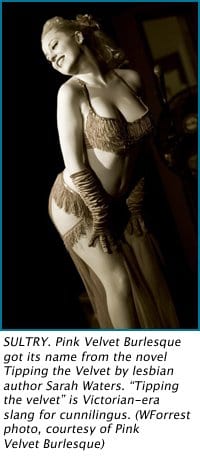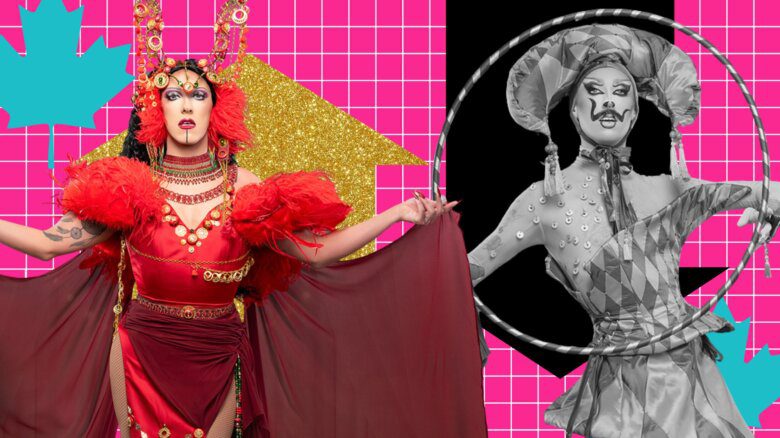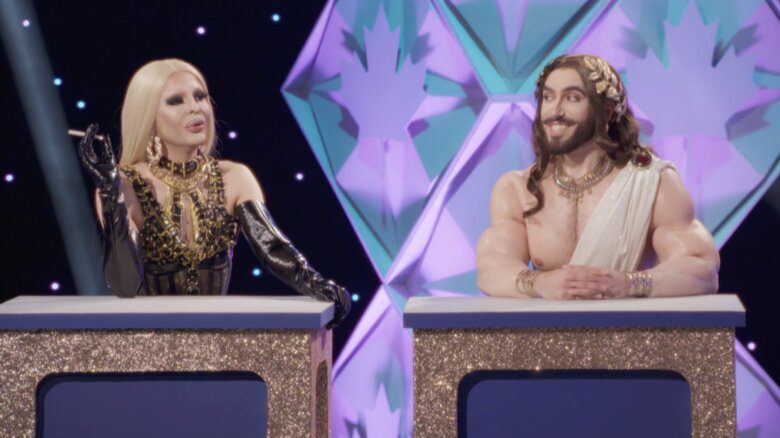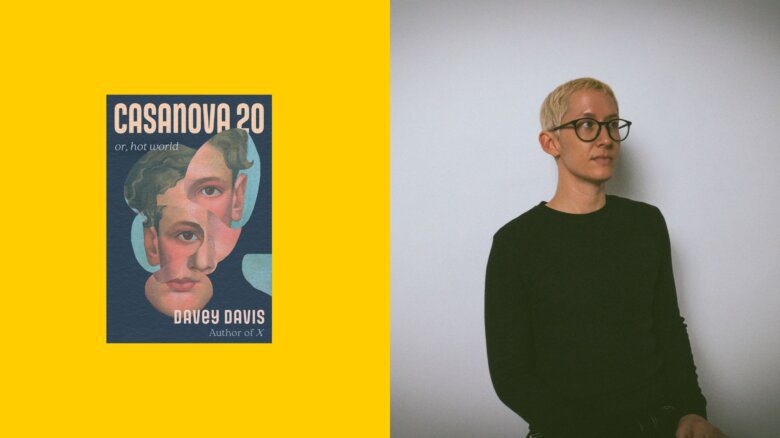Halifax’s Pink Velvet Burlesque troupe combines the aesthetic of vaudeville with satiric comedy and the flare of traditional cabaret. The cacophony that soundtracks their girlie variety show is inspired by post-World War II films, music and fashion.
“During the late 1940’s and early 1950’s was the tail end of burlesque golden era,” says troupe leader Cadence Macmichael, whose stage name is Miss C. “I’m infatuated with old Hollywood glamour and starlets. I love burlesque because of the human side of it. Burlesque is a celebration of life and as a performer you create a fantasy that you invite your audience to become a part of.”
Pink Velvet boldly goes above and beyond the duties of most enterprising entertainers. The colour pink represents the strong feminine presence of the group, while the “velvet” refers to a novel by Sarah Waters titled Tipping the Velvet.
Burlesque is often mistaken for a peepshow or merely a cast of raunchy strippers. Pink Velvet certainly delivers a somewhat naughty element to their performance by teasingly strutting their stuff. Most burlesque performers create their own costumes, which can merely consist of a sparkly G-string and a couple of tassels dangling from pasties strategically placed over their nipples. Performers aren’t constrained solely to the periphery of dancing, as music is paramount in the realm of burlesque performance.
“I wanted to develop a professional group of performers that were committed to burlesque,” she says. “I wanted to solidify our place in the world’s burlesque scene and to put our troupe on par with those in bigger cities. I want people to realize this is a legitimate form of entertainment that people deserve to be paid for and respected as a form of artistic expression.”
Pink Velvet’s diverse tribe consists of Rogue Fatale, Oliver Hugh, Mistress Molotov, Kitty Le Coque, Kay Licious, Mena Von Fleisch, Wonder Bra, Double Dee, Ruby Raunch, Mz Cock-Tail, Chainsaw Lover, Mr Toots, Chesty La Rue, The Sweet Tarts and Lowtek. Burlesque performing can be an empowering experience; however, the esteem and personal gain is determined by the inner motivations of the individual performer.
“You have to command the respect of the audience,” says Macmichael. “And boldly declare with your acts that you are not afraid to be yourself — whatever or whoever that may be. Being a modern burlesque dancer is much more empowering for women these days than it would have been back in its heyday. Now, most burlesque troupes are run by women who call the shots and make the decisions. Being a burlesque performer you get to decide what kind of acts you’ll do, which doesn’t mean you have to be a stripper. These are meant to be variety shows with many different acts — even in the striptease acts the true intention is never to get naked, it’s about the entertainment element.”

 Why you can trust Xtra
Why you can trust Xtra


